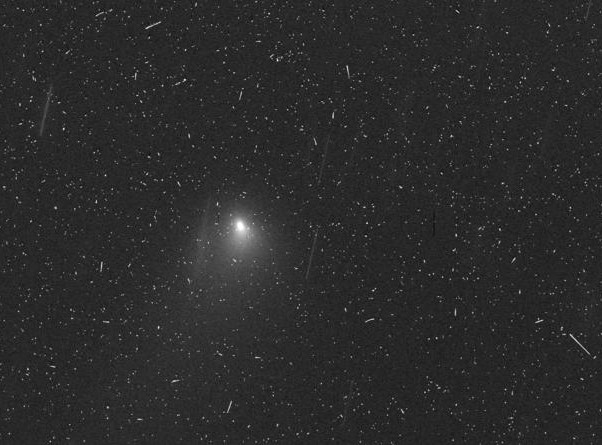The first interstellar comet 2I / Borisov turned out to be surprisingly similar to the long-period comets of the solar system, astronomers found out, who have not yet managed to find significant differences between the “guest” and local comets. This will allow us to draw conclusions about the laws of formation of planetary systems. In the next couple of months, more and more observatories will be connected to observations of the comet, since its brightness is gradually growing.
Comet C / 2019 Q4 was discovered on August 30, 2019 by astronomer Gennady Borisov, while it was at a distance of about three astronomical units from the sun. Soon, observations confirmed that the orbit of the celestial body has an eccentricity of more than 3, which means that the comet has extrasolar origin, moves in a hyperbolic orbit and will soon leave the solar system, making it the first interstellar comet in history. It is expected that the comet will come closer to the Sun on December 9, 2019, and on December 28, 2019. Observations of its have already shown that it may be similar to the comets of the solar system, as well as revealed an active outflow of gas from the surface of the core, in particular cyan molecules.
Now, Piotr Guzik of the Jagiellonian University in Krakow and his colleagues have published the results of an analysis of comet data obtained using the WHT (William Herschel Telescope) and Gemini North telescopes. They concluded that the diameter of the comet’s nucleus is approximately 450 meters, and its albedo is 0.04. The surface of the comet has a reddish hue and contains dust particles, for which the power-law distribution of size is −3.5 ± 0.7, and the speed of dust particles flying off the surface of the nucleus is estimated at 40 meters per second. 2I / Borisov has an extended uniform coma and a wide short tail.
All of the above properties of the newly discovered comet make this object practically indistinguishable from the long-period comets of the solar system, with the exception of the orbit and speed of movement. As we approach the Sun, 2I / Borisov will become brighter, which will allow astronomers to obtain better images and spectrometric data, on the basis of which, in the future, our understanding of the physical properties of interstellar comets and exoplanetary systems as a whole will be built.
